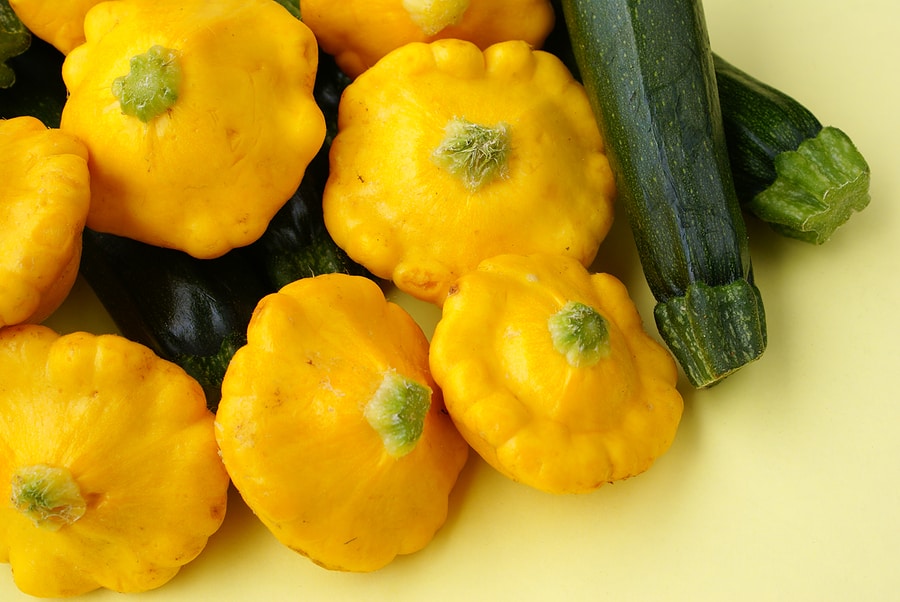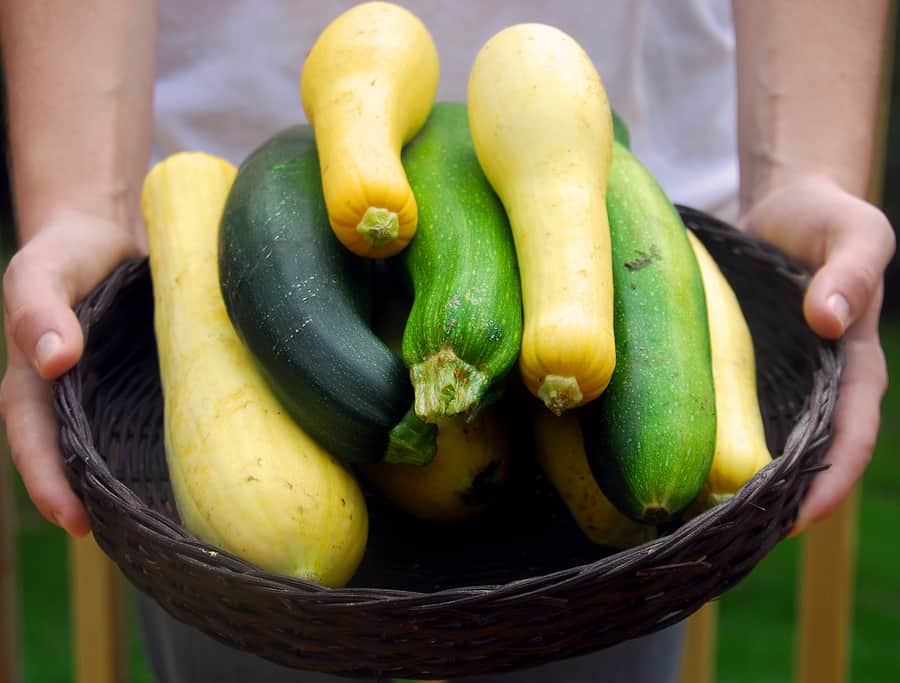Harvest summer squash young and tender. Harvest summer squash when the skin is glossy and soft enough to be easily pierced with your thumbnail.
Related articles:
When to harvest summer squash
- Summer squash is edible as soon as the skin is glossy and can be pierced with a thumbnail.
- Harvest zucchini, crookneck, and yellow squash when they are 6 to 8 inches long.
- Harvest scalloped varieties when they are 3 to 6 inches in diameter.
- You can harvest zucchini and yellow summer squash as baby squash when the fruit is 4 to 6 inches long. Baby summer squash will be tender and tasty.
- Summer squashes can grow quite large—up to 10 inches long—but it’s best to pick earlier. Summer squash is most flavorful when harvested young and tender.
- Check plants every two or three days once they begin to produce fruit. Leaving large fruit on the vine will slow and can even stop production; large squashes that go to seed signal the plant that its life cycle is ending. Harvest summer squash before the fruit grows large and seedy.
- Overripe squashes use moisture and nutrients that could be used to produce young, tender fruit. (But overly large squashes can still be used as a puree for soup or grated for sweetbreads.) Summer squash that is too hard to be marked by a thumbnail is too old to use and should be composted or thrown away.

How to harvest summer squash
- Use a garden pruner or sharp knife to cut the fruit away from the vine; leave a short stem attached to the fruit to extend the storage life. Don’t tug or pull fruit from the vine; you could injure the plant.
- Handle summer squash gently to prevent wounds to the skin.
More tips on harvesting all summer vegetables at Summer Vegetable Harvest Tips.

How to store summer squash
- Store summer squash by gently wiping the fruit clean with a damp cloth and then placing it in a perforated plastic bag (to maintain humidity) in the vegetable crisper of the refrigerator.
- Do not store summer squash in the refrigerator for more than 4 days.
- Avoid storing summer squash at temperatures below 50°F (10°C); the fruit is susceptible to chilling injury at temperatures below 50°F; chilling injury symptoms include surface pitting, water loss, yellowing, and decay.
- Zucchinis can be frozen for use in bread and soups: peel, slice or cube, and blanch the fruit by placing the squash in a wire basket then plunge it into a large kettle of rapidly boiling water for three minutes; then cool the squash by plunging the basket into ice water for another three minutes; drain and pack the fruit in freezer containers. Frozen summer squash can be prepared for mealtime by boiling for three to five minutes until fork tender.
Storing winter squash is different than storing summer squash–read How to Harvest, Cure, and Store Winter Squash.
Kitchen tips: Eight Ways to Cook and Serve Summer Squash
Growing tips: How to Grow Summer and Winter Squash
Squash articles at Harvest to Table:
How to Grow Summer and Winter Squash
How to Plant and Grow Pumpkins
How to Harvest and Store Summer Squash
How to Harvest, Cure, and Store Winter Squash
How to Harvest and Store Pumpkins
Eight Ways to Cook and Serve Summer Squash
Seven Ways to Cook and Serve Winter Squash
How to Make Creamy Pumpkin Soup
How to Cook and Serve Squash Blossoms
Squash Growing Problems: Troubleshooting
Squash Vine Borer Organic Pest Control
Squash Bug Organic Pest Control
Corn, Beans, and Squash: The Three Sisters
Garden Planning Books at Amazon:
- Vegetable Garden Almanac & Planner
- Kitchen Garden Grower’s Guide Vegetable Encyclopedia
- Vegetable Garden Grower’s Guide
- Tomato Grower’s Answer Book
More harvest tips:
Learn when and how to harvest your favorite vegetables for the best flavor and texture. Get storage tips for each crop. Click on the vegetable you are growing below.
- Artichoke
- Arugula
- Asparagus
- Beans
- Beets
- Broccoli
- Brussels Sprouts
- Cabbage
- Cantaloupe — Melons
- Carrots
- Cauliflower
- Celery
- Chard
- Collards
- Corn, Sweet
- Cucumbers
- Eggplant
- Endive and Escarole
- Garlic
- Jerusalem Artichoke
- Kale
- Kohlrabi
- Leeks
- Lettuce
- Melons
- Okra
- Onions
- Parsnips
- Peas
- Peppers
- Potatoes
- Pumpkins
- Radicchio
- Rhubarb
- Rutabaga
- Spinach
- Squash, Summer
- Squash, Winter
- Sunchokes
- Sweet Potato
- Swiss Chard
- Tomatillo
- Tomatoes
- Turnips
- Watermelon
















